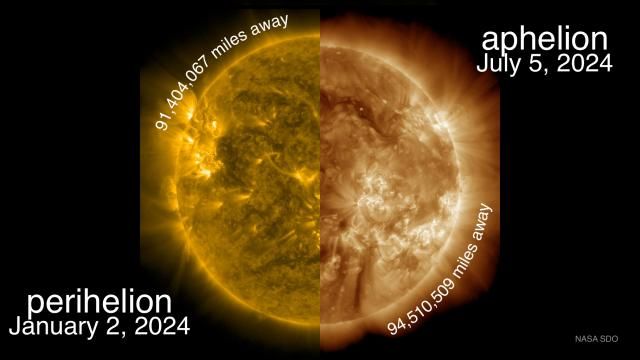
This summer, Earth is making its annual journey away from the Sun, reaching its farthest point on July 5 at 1:06 a.m. EDT. Known as aphelion, this event marks the point in Earth's orbit when it is approximately 3% farther from the Sun than during perihelion in January.
Earth's orbit around the Sun is not a perfect circle but an ellipse, meaning its distance to the Sun varies throughout the year. This variation results from gravitational interactions between planets and their orbits. Jupiter, as the most massive planet in our solar system, exerts significant influence on Earth's orbit.
Although aphelion occurs during summer months in the Northern Hemisphere, it does not significantly impact temperatures due to Earth's axial tilt. The tilt causes different parts of the planet to receive varying amounts of sunlight throughout the year, leading to seasonal changes.
At aphelion, Earth is about 94.5 million miles away from the Sun compared to 91.5 million miles during perihelion in January. This difference may seem insignificant; however, it highlights the intricacies of our planet's orbit and its relationship with the Sun.
Earth's eccentricity, a measure of how much its orbit deviates from a perfect circle, is relatively low at 0.017. This makes Earth's orbit fairly circular compared to other planets like Mars and Pluto, which have more pronounced elliptical orbits.
As we celebrate the summer season and enjoy the long days, it's fascinating to reflect on Earth's position in our solar system during this time of year. Aphelion is just one of many celestial events that remind us of the intricate dance between planets and their orbits around the Sun.





